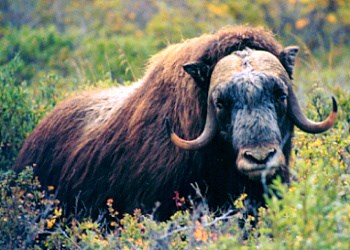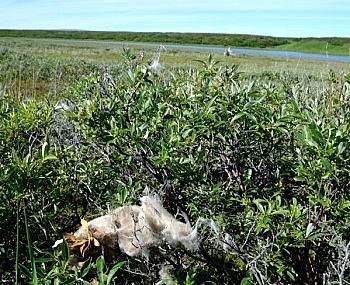
NPS Photo/Marci Johnson Unlike some animals that hibernate or migrate southward in the winter, muskoxen are year-round residents of Cape Krusenstern National Monument. They are well suited to survive the rigorous and demanding environment of the arctic. Their bodies are compact and covered with layers of thick, insulating fur and longer guard hairs. 
NPS Photo The Bearded OneInupiaq Eskimo call muskoxen Oomingmak, meaning “hairy one” or “bearded one.” This is because of the long, elegant shaggy fur that trails like skirts along their flanks. Their fur is dark brown with a creamy “saddle” across the back, as if it were dusted with snow. 
NPS Photo/Rachel Post Muskox also start to shed their dense fur, called qiviut. Imagine if you were a muskox and the time has come to shed your dense underfur. It’s hot and itchy. For this reason muskox are often found rubbing themselves against any available surface. Willows, downed trees, and even buildings are popular places for muskox to use to shed their qiviut quicker. Local subsistence users still utilize qiviut in their knitting. |
Last updated: September 21, 2023
